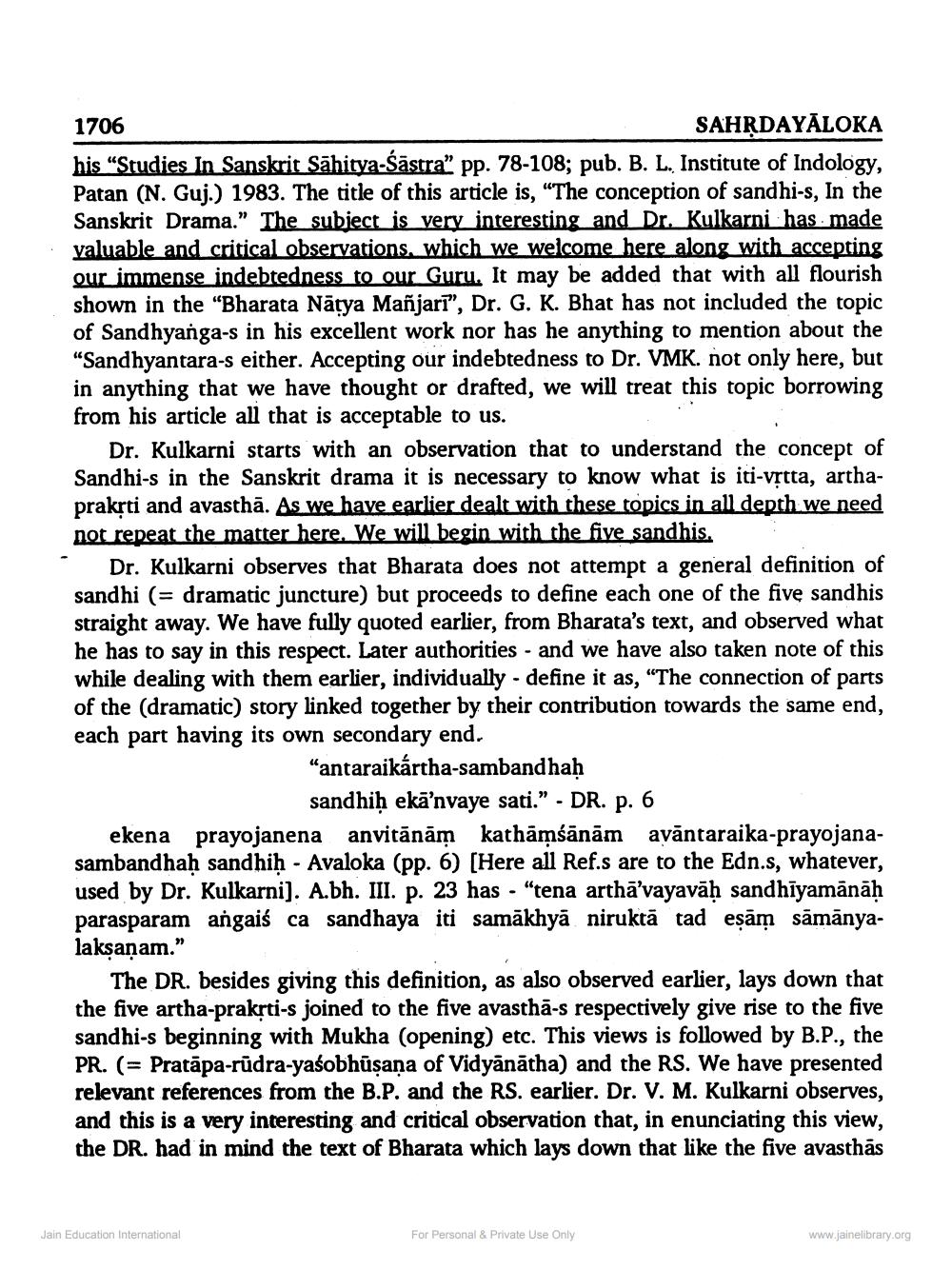________________
1706
SAHRDAYĀLOKA his “Studies In Sanskrit Sāhitya-Śāstra” pp. 78-108; pub. B. L. Institute of Indology, Patan (N. Guj.) 1983. The title of this article is, "The conception of sandhi-s, In the Sanskrit Drama." The subject is very interesting and Dr. Kulkarni has made valuable and critical observations, which we welcome here along with accepting our immense indebtedness to our Guru. It may be added that with all flourish shown in the "Bharata Natya Manjari", Dr. G. K. Bhat has not included the topic of Sandhyanga-s in his excellent work nor has he anything to mention about the "Sandhyantara-s either. Accepting our indebtedness to Dr. VMK. not only here, but in anything that we have thought or drafted, we will treat this topic borrowing from his article all that is acceptable to us.
karni starts with an observation that to understand the concept of Sandhi-s in the Sanskrit drama it is necessary to know what is iti-vrtta, arthaprakrti and avasthā. As we have earlier dealt with these topics in all depth we need not repeat the matter here. We will begin with the five sandhis.
Dr. Kulkarni observes that Bharata does not attempt a general definition of sandhi (= dramatic juncture) but proceeds to define each one of the five sandhis straight away. We have fully quoted earlier, from Bharata's text, and observed what he has to say in this respect. Later authorities - and we have also taken note of this while dealing with them earlier, individually - define it as, “The connection of pa of the (dramatic) story linked together by their contribution towards the same end, each part having its own secondary end.
“antaraikártha-sambandhaḥ
sandhiḥ ekā’nvaye sati." - DR. p. 6 ekena prayojanena anvitānām kathāmśānām avāntaraika-prayojanasambandhaḥ sandhiḥ - Avaloka (pp. 6) (Here all Ref.s are to the Edn.s, whatever, used by Dr. Kulkarni). A.bh. III. p. 23 has - "tena arthā'vayavāḥ sandhīyamānāḥ parasparam angaiś ca sandhaya iti samākhyā niruktā tad eșām sāmānyalaksanam.”
The DR. besides giving this definition, as also observed earlier, lays down that the five artha-prakrti-s joined to the five avasthā-s respectively give rise to the five sandhi-s beginning with Mukha (opening) etc. This views is followed by B.P., the PR. (= Pratāpa-rūdra-yaśobhūşana of Vidyānātha) and the RS. We have presented relevant references from the B.P. and the RS. earlier. Dr. V. M. Kulkarni observes, and this is a very interesting and critical observation that, in enunciating this view, the DR. had in mind the text of Bharata which lays down that like the five avasthas
Jain Education International
For Personal & Private Use Only
www.jainelibrary.org




